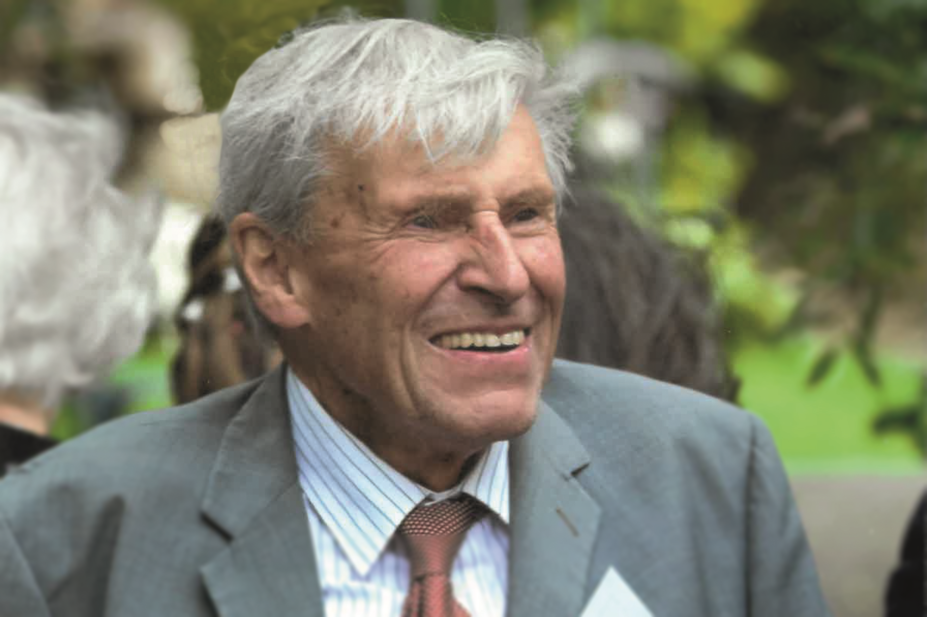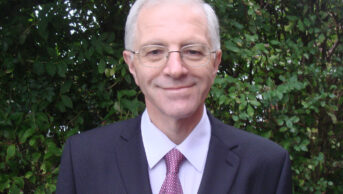
Courtesy of Bronwen Evans
William Charles Evans, who has died aged 93, was best known for his authorship of Trease and Evans’ Pharmacognosy, a seminal text on the chemistry and uses of medicinal plants.
Evans, known as Bill, was a prolific researcher and educator throughout his 60-year career. Born in Barcombe, East Sussex, on 3 April 1924, he studied for his Bachelor of Pharmacy degree at Brighton Technical School. In 1944, he took his final exams at the then Pharmaceutical Society of Great Britain’s school of pharmacy in Bloomsbury Square. In The People’s University: 150 years of the University of London and its External Students, Evans describes sitting these exams under the sound and fire of V1 and V2 missiles, interspersed with “periodic visits to the air raid shelter”.
In 1946, Evans registered with the Pharmaceutical Society of Great Britain and began his pharmacy career with an apprenticeship at HA Baker, a community pharmacy in Lewes. He was awarded a BSc in Special Chemistry in 1947, and that same year he joined the University of Nottingham’s pharmacy department where he would spend the rest of his academic career. In 1951, he was awarded a PhD for research into ‘The application of partition chromatography to some phytochemical problems in the Solanaceae’, under the supervision of MW Partridge. From 1967 until his retirement in 1985, he was head of the department’s phytochemistry and pharmacognosy section.
Paul Dewick, former researcher and lecturer in phytochemistry at the University of Nottingham, joined Evans’s department in 1971. He recalls a man who was “friendly, supportive and understanding, helping a non-pharmacist post-doc phytochemist integrate into a new and rather forbidding environment”.
In 1966, Evans joined George E Trease, then head of the university’s pharmacy department, as co-author on the 9th edition of A Textbook of Pharmacognosy, later known as Trease and Evans’ Pharmacognosy. Following Trease’s death in 1986, Evans assumed sole authorship of the 13th edition of the book. A further three editions were published under Evans’s authorship, alongside guest contributions from experts in the fields of phytochemistry and pharmacognosy. One of these contributors was Elizabeth Williamson, emeritus professor of pharmacy at the University of Reading, who first met Evans when he was the external examiner for her PhD viva.
“I have never really got over my awe of him since then, as he was also the author of the standard textbook we had all used in our pharmacy course,” says Williamson. “I had made a very silly mistake in my thesis title — using an abbreviation — but luckily I then discovered he was a kind man.
“He later asked me to write chapters for the [Trease and Evans’ Pharmacognosy] textbook, and it was a pleasure to work with someone so meticulous and knowledgable. During my travels I have seen his book on laboratory shelves all over the world. I still consult it when necessary.”
Peter Houghton, emeritus professor in pharmacognosy at King’s College London, describes the book as “the primary reference not only for British undergraduates, but internationally for many senior researchers involved in teaching and research into medicinal plants”.
“He always took more than a passing interest in my development as an academic pharmacognosist, and in latter years he graciously asked me to contribute to the textbook on pharmacognosy,” says Houghton.
“Although Bill had started his career when pharmacognosy was largely descriptive, with an emphasis on botanical features, his textbook indicated how he kept in touch with its development. Successive editions reflected the widening scope of the subject, encompassing phytochemistry, pharmacology and therapeutics, as well as the increasing interest in complementary medicine and medical systems from cultures other than Western ‘mainstream’.”
Daphne, Evans’s wife, who passed away in 2011, supported Evans with the revisions by conducting literature searches and providing text contributions. Daphne was well-suited to such work, as her personal area of expertise was the use of psychotropic drugs in indigenous religious ceremonies.
Evans was made a Fellow of the Pharmaceutical Society of Great Britain in 1954, and was also a Fellow of the Institute of Biology and of the Linnean Society. His research career focused on tropane alkaloids and resulted in around one hundred publications, many of which focused on alkaloids from Rauwolfia and Datura species. In 1971, he received a DSc for characterisation of new alkaloids from the Solanaceae and Erythroxylaceae families. His influence in the sphere of Solanaceae research was recognised in the naming of a plant: Iochroma australe cv. Bill Evans, a deep purple variant of the distinctive trumpet-shaped flower.
“He much preferred to concentrate on his research and writing rather than becoming embroiled in departmental politics,” says Dewick. “He was well-travelled, off abroad most summers, especially to countries where he could obtain further plant materials for his research, and new data and photographs for the next edition of his book.
“Bill was a true gentleman, even-tempered, modest and quiet, and above all well-liked by all who knew and worked with him. He had a long and successful life, and though I am naturally very saddened by his death, I feel privileged to have known and worked with him.”
Houghton recalls a man who never sought the limelight or financial success but was instead “quietly, thoroughly and devotedly aiming to deepen and disseminate the fascinating subjects in which he was interested”.
“His departure accentuates the sense of a virtual disappearance of pharmacognosy as a branch of pharmaceutical science in the UK,” he adds.
Evans is survived by three daughters, one son, two grandchildren and three great-grandchildren.
You may also be interested in

Nina Barnett (1965–2023)

Dominique Jordan (1960–2023)
